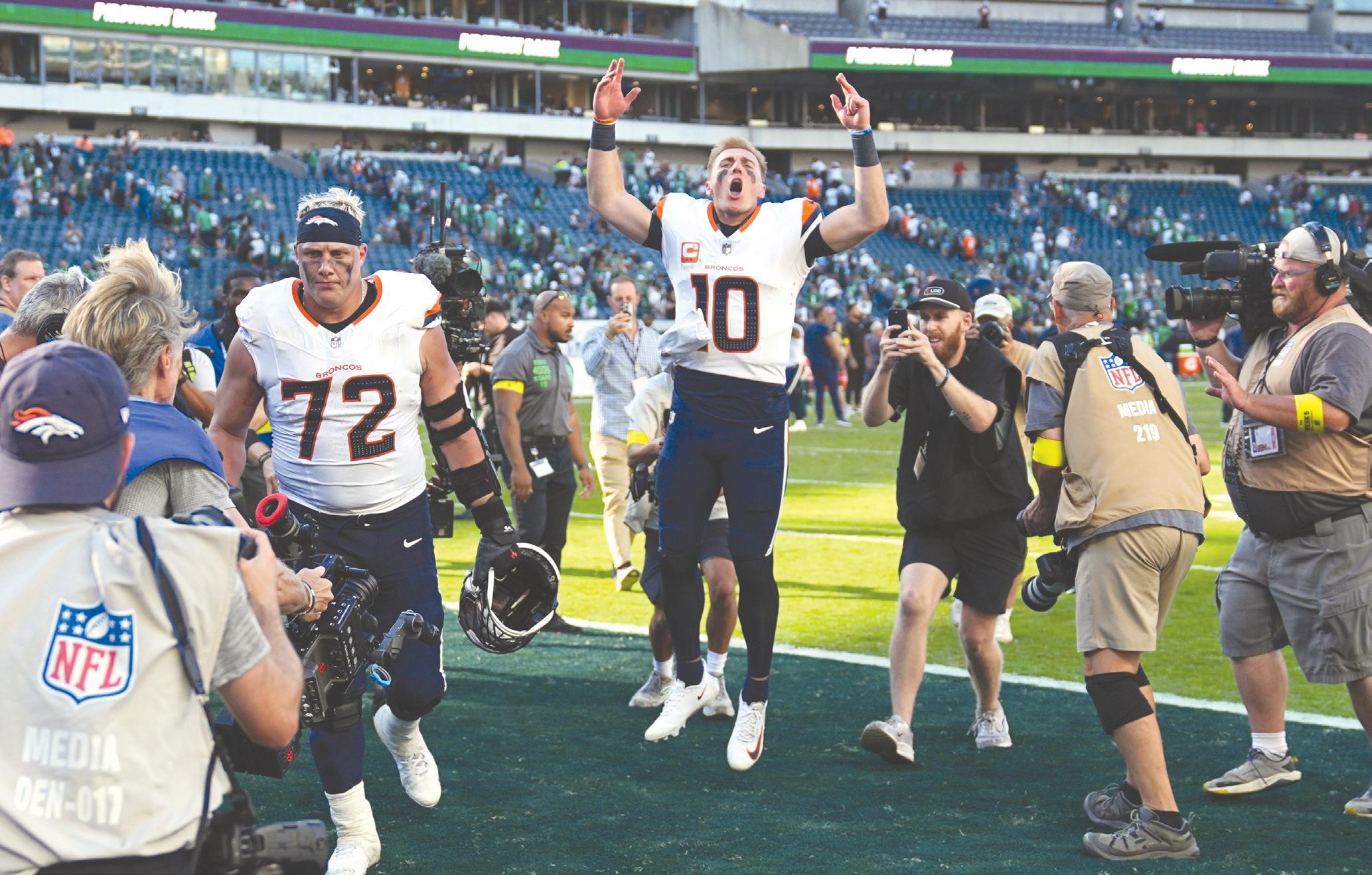SECTION E
WEDNESDAY, OCTOBER 8, 2025

SECTION E
WEDNESDAY, OCTOBER 8, 2025
By BRENT STUBBS Chief Sports Editor bstubbs@tribunemedia.net
JASON ‘Jay-Shred’ Johnson didn’t have time to recuperate from his last professional bodybuilding show before he headed to Mexico a week later to successfully defend his title.
In achieving his fourth pro win in three years, Johnson said he can and should now be considered the most successful bodybuilder since his mentor Joel Stubbs left the scene.
After starting his season off in June, Johnson said he’s delighted that he got to close out the year with another title.
“I started off in Argentina, then a week and a half after that, I went to Dubai,” Johnson recalled. “A week ago, I was in Ecuador and now I just returned from Mexico with another pro win there. It was a fantastic year for me.”
‘No matter what position I get, I always try to overcome the odds to make myself better for the next competition.’
in the same show.”
Johnson thanked God for giving him the opportunity to represent the Bahamas. He said he was blessed to be a competitor in the sport competing against some of the best competitors from within the region.
“From Ecuador to now, I got tighter condition wise,”he said. “If I did what I did in Mexico, I would have won Ecuador. But I’m still pleased with the results.
“No matter what position I get, I always try to overcome the odds to make myself better for the next competition.”
He noted that he learnt a lot of that from Stubbs, his longtime idol, who had nothing but praise for his young protege.
“They were happy to see me come back,” said Johnson, about the organisers, the judges and the fans, who cheered him on during the competition.
“I brought a better package from last year’s show in Mexico and I became the first Bahamian to ever hold the title twice
Competing against nine other competitors, Johnson said he had his hands full as a few pro show winners were in the line-up, but he was able to once again impress the judges as he defended his title.

“I am indeed proud of Jason’s accomplishments thus far in the sport of bodybuilding — Men’s Physique, to be exact,” said Stubbs, who dominated in the past as a heavyweight who brought a lot of international acclaim to The Bahamas with his enormous back.
MEXICO - SEE PAGE THREE

By BRENT STUBBS Chief Sports Editor bstubbs@tribunemedia.net
SUNDAY was a special day for several athletes and former athletes as they became the first to be inducted into the newly created Hall of Fame by St Paul’s Baptist Church. The 7.30am early morning service at the church on Bernard Road, Fox Hill, honoured cyclist Deacon Jeff Burnside, softball pitcher Harold
“Banker” Fitzgerald, versatile Olympia Morris and middle distance runner Minister Denise KnowlesJohnson, all retired, along with Joshua Bodie and brother and sister Burchell and Alyssa Morgan; Surai Rolle; Kimora Strachn and Lakeisha Mackey. Reverend Patrick Smith, a former outstanding volleyball player, was also honored posthumously as his wife Felicia and son Patrick Jr, accepted his award. Pastor George Bodie, a
former versatile arthlete during his heyday, said it was important for the Church to play his role in recognising the achievements of their athletes, who have excelled in sports and are still making their mark in the sand of time.
Three-time Olympic long jumper turned politician Shonel Ferguson; immediate past Bahamas Olympic Committee president Wellington Miller, Bahamas
BAHAMAS Boxing Commission chairman Fred Sturrup has announced that the it’s third Hall of Fame induction event will be one of the highlights for the Ministry of Youth, Sports and Culture’s Month of activities.
Sturrup, a veteran journalist, said the commission extends heartfelt appreciation to Minister Mario Bowleg and his team for providing the November sports recognition forum.
The commission will hold the ceremony on Thursday, November 27, at Breezes Hotel, starting at 7pm.
“Inducted in the Bahamas Boxing Hall of Fame will be the late fistic icons Leonard “Boston Blackie” Miller and Ray Minus Jr,” revealed Sturrup, of both outstanding former boxers and trainers who will be honored posthumously as they are now deceased.
““We in the Commission take great pleasure in the opportunity to showcase boxing and its iconic figures. Previous inductees include: Elisha Obed, Gomeo Brennan, Yama Bahama, Bertram “Bert Perry” Perigord, Wilfred “Battling”Douglas and Wilfred Coakley.”

THE New Providence Volleyball Association continued its regular season ction on Monday night at the DW Davis Gymnasium with a double header played.The Warhawks won the double header over the University of the Bahamas Lady Mingoes and the men;s Titans respectively. Action continues tonight with another double. In the ladies’ 7:30 opener, the Panthers will face the Aces and the Technicians will play the Intruders in the men’s nightcap.
OFFICIALS BACO BANQUET
THE Bahamas Association of Certified Officials, in celebrating 50 years as the organization that officiates at local track and field, road running and cross country competitions, will celebrate its 50th year of existence with a banquet next month. Honoring the life of its founding president Deacon Leviticus ‘Uncle Lou’ Adderley, BACO will hold the event at the British Colonial Hotel on November 1.
NOTES - SEE PAGE THREE

FAME - from page one
amateur boxing president Vincent Strachan; acclaimed middle distance
runner William ‘Knucklehead’ Johnson and his wife Dawn Woodside-Johnson and Tribune Sports
Editor Brent Stubbs participated in the service, bringing remarks and presenting awards to the honorees.
Bodie, who succeeds Bishop J Carl Rahming as the senior pastor at St Paul’s, said it was their way of honoring the past and the present athletes and to show the future athletes what they can achieve when they are successful.
“We are in the business of dealing with people and in the church we only focus on a certain set of people and we don’t look at the whole man,” Bodie said.
“So coming from a
background as. young boy, who played a lot of sports, I understand how sports play a significant role in nation building.”
He noted that while he didn’t get the opportunity, a lot of his former teammates and rivals earned athletic scholarships to attend universities and colleges in the United States.
“The problem is, when you are on top, people remember you, but when you fall off the chart, people forget you. They only remember you and your achievements when you ded,” he said.
“So we wanted to celebrate our people who made great sacrifices and earned significant achievements through sports in our church. It was good to honour them.”
Bodie said they decided to select those persons who would have stood out both locally and internationally,
but in most cases, were not recognised for their accomplishments.
Both Ferguson, whose image was placed on the country’s mailing stamp at one time, along with Johnson, whose name is still linked on the Bahamas record books with the longest standing record in the men’s 1,500 metres, talked about their days growing up in Fox Hill and competing for the Bahamas on the international stage.
In capping it off, Stubbs praised Bodie and St Paul’s for taking the initiative that should be copied by other churches and even communities.
He noted that more of the unsung heroes who would have made their impact in sports should be honoured by the churches in which they got their start in discipline and dedication from growing up in church.

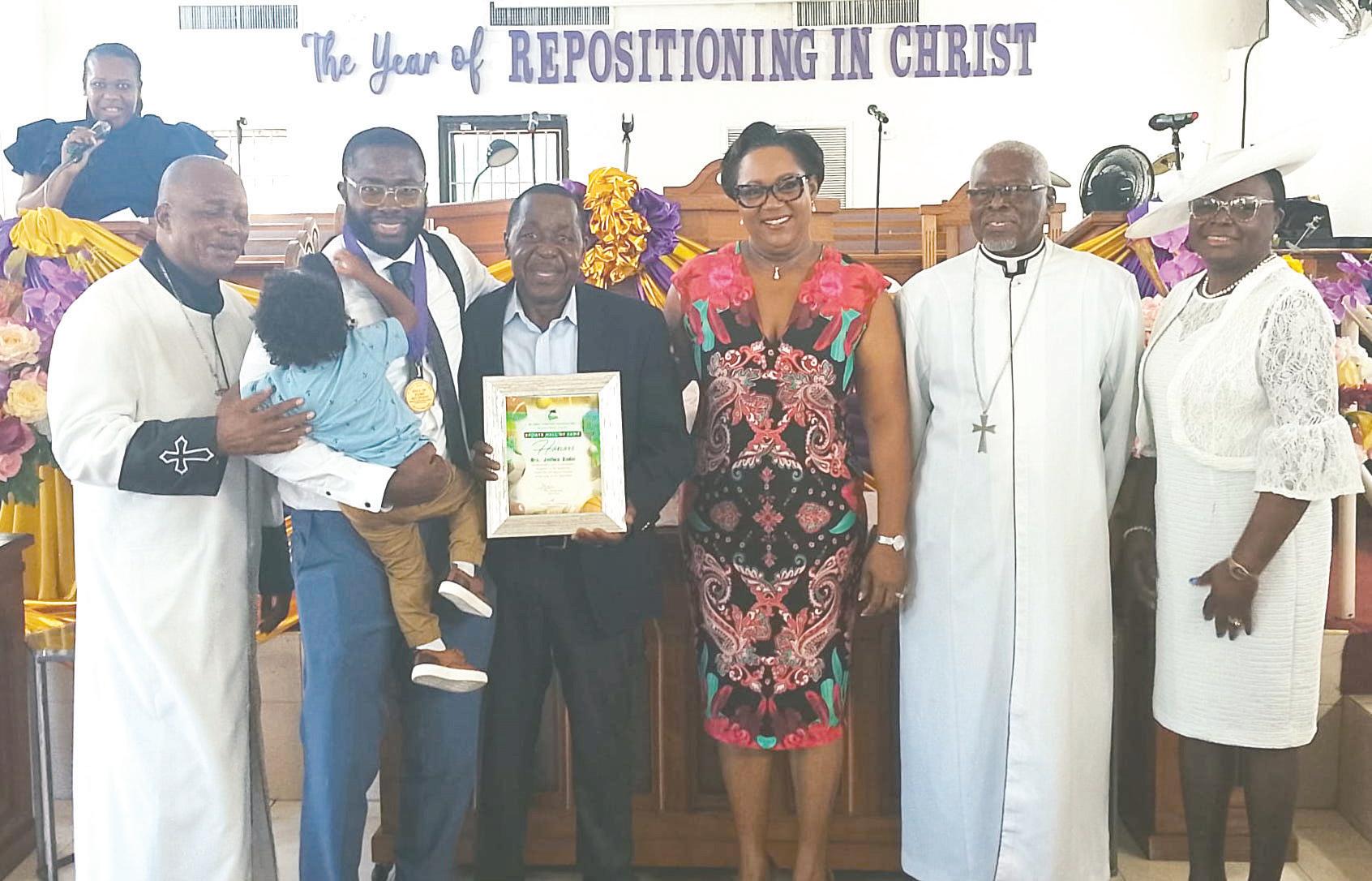

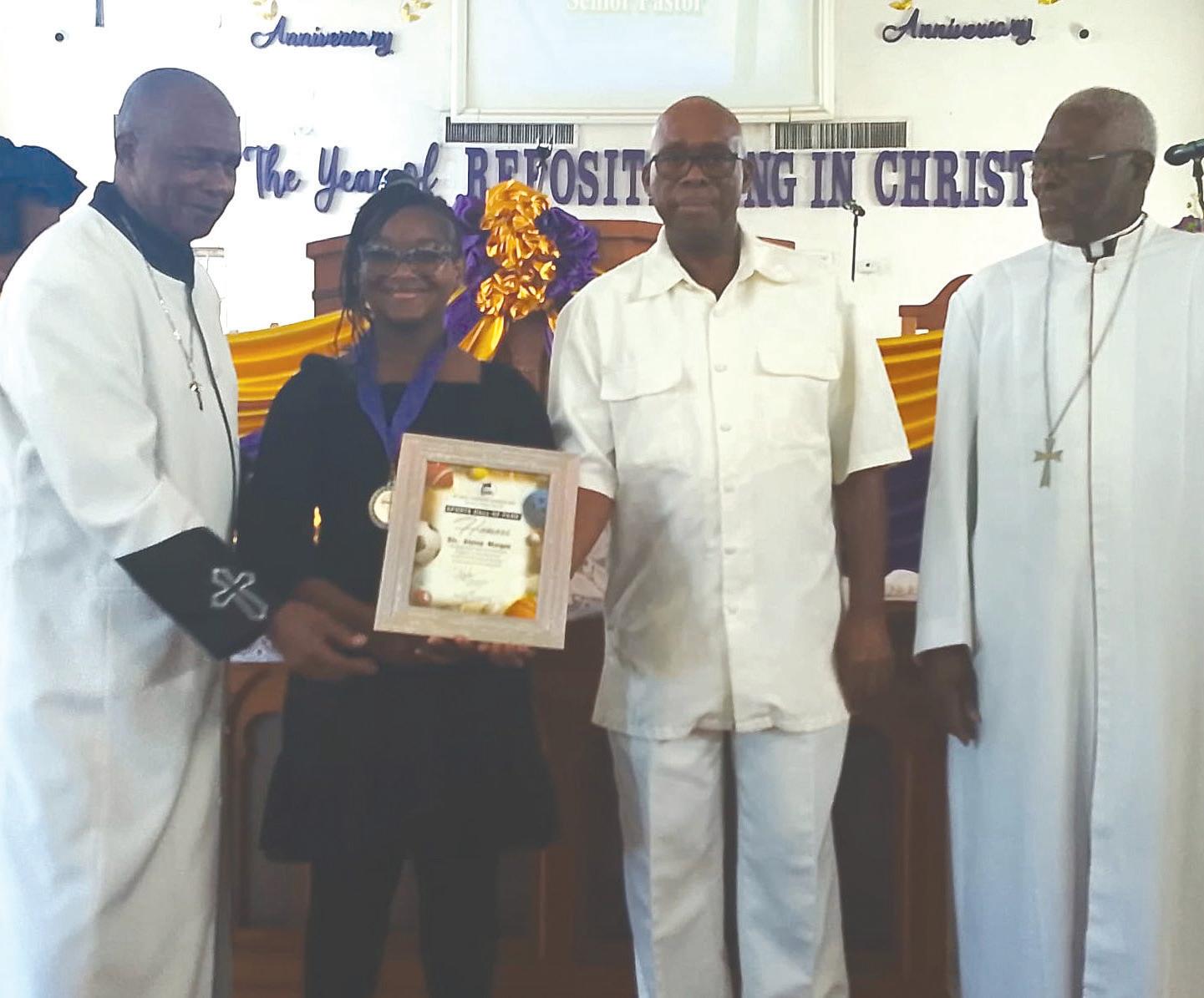
“Over the past two years, Jason has shown tremendous growth and maturity, both mentally and physically. This progress is the result of his hard work, determination, commitment, and unwavering focus on his dreams as a bodybuilder.”
Stubbs, a Bahamasair pilot and personal trainer, said Johnson, who is also a personal trainer, continues to improve with each competition that has led him to win four shows to date — a remarkable achievement.
“I stand to be corrected but, I think we can agree that he is now ranked as the #1 Men’s Physique Athlete in this region,” said Stubbs, the immediate past president of the Bahamas Bodybuilding and Fitness Federation.
“With that said, the plan now is to take a well deserved off-season period,
allowing his body the necessary time to recover, rebuild, and grow, which will return him even bigger and better.”
From one outstanding competitor to the next,
Stubbs said he’s confident that Johnson’s journey will inspire other professional athletes to channel this positive energy and motivation into their own pursuits of excellence, and to keep pushing and believing.
“I extend my best wishes to all local bodybuilders as they continue to represent our nation with pride and take the 242 to the world,”
Stubbs summed up.
Johnson was also saluted by former bodybuilder and executive Nardo Dean, who indicated that he’s done tremendously well for himself.
“When Jason first started, I told him to keep it up because I saw the potential in him,” said Dean, a Ministry of Tourism sports executive and a personal trainer.
“He had the drive, the right mindset and the right training and the discipline to make it happen. I just tried to push him to keep him on the straight and narrow path.”
One of things that has impressed Dean about Johnson is the fact that “he’s not easily distracted. He is very focussed and he’s not concerned about the noise in the market.
“The other thing I’m really impressed with is that he also has a willingness to help the up and coming bodybuilders with their posing and workout.”
As one of those bodybuilders on subvention from the Bahamas government, Dean said he noticed that Johnson doesn’t allow the lack of funding to deter him from competing on the international stage as most of the pro bodybuilders have doner.
‘A lot of the trips he does, he does a lot of the funding through self-help
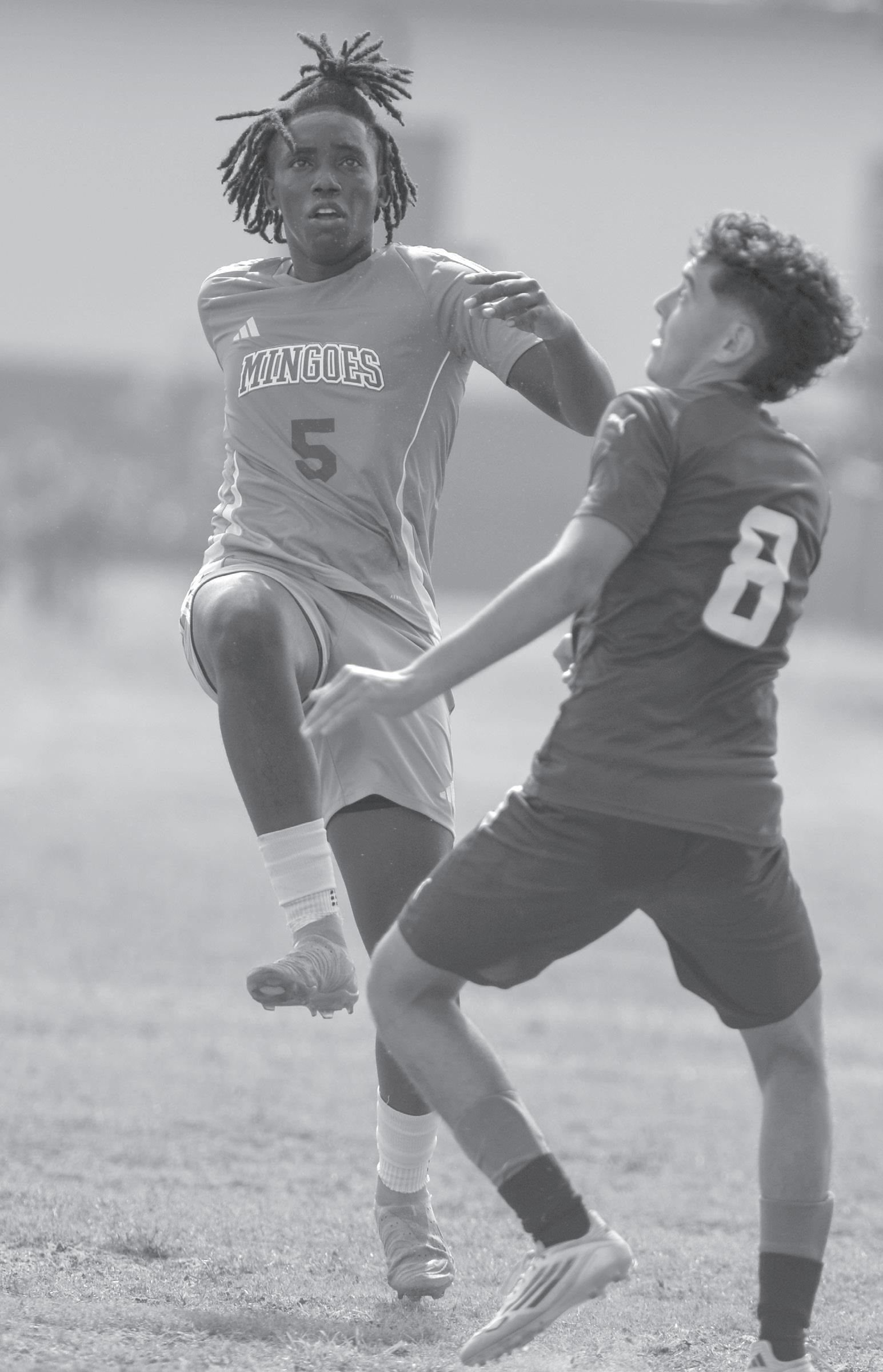
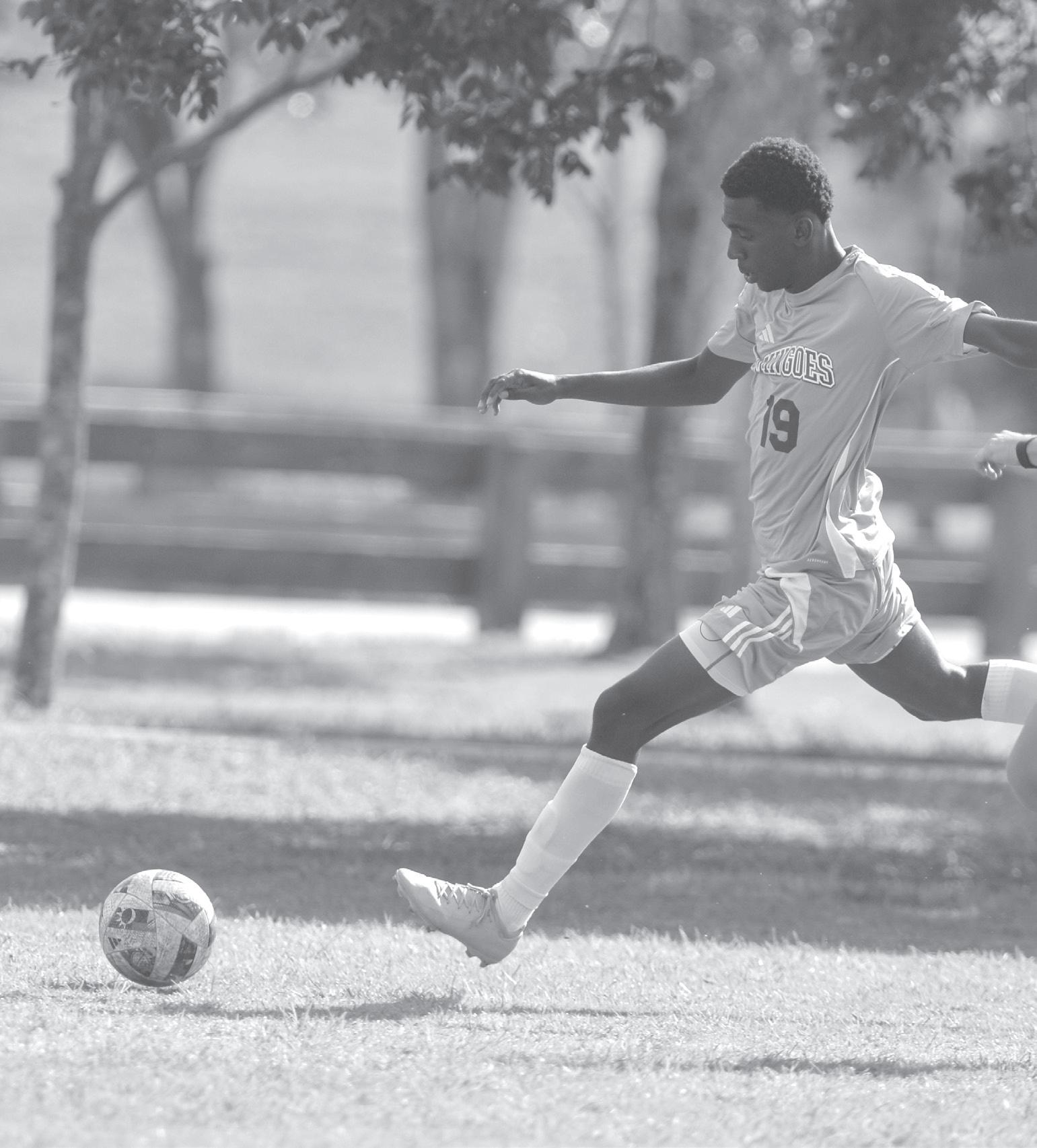
from corporate Bahamas,” Dean said. “He’s one of the only pro bodybuilders who is still competing actively. He’s been doing a tremendous job.”
As a genuine competitor who loves the sport, Dean said he was also pleased to see Johnson giving back to the sport when he travelled with the national team to one of the Central American and Caribbean Bodybuilding Championships as a coach about three years ago.
With the season over and done with now, Johnson said he will take some time off to recuperate. He intends to continue to train his clients, but indicated that he won’t be lifting any weights for a month to enable his body to properly recuperate.
“The judges told me that I don’t need to get any bigger. I just need to work on my back and my upper chest and I will be alright,” Johnson said. “My goal is to
get a complete package.”
As the number one physique bodybuilder in The Bahamas, placing in the top five in every show he’s competed in, Johnson said he will take a vacation in December with his family before he gets back into training in January.
“I’m happy that my season ended with this pro win,” he said. “I retained the title in Mexico. I want to express my appreciation to my sponsors Fitness Connection and Snatch N Go and to Stubbs for the support they offered this year, along with my family.”
NOTES - from page one
The gala event will begin at 6pm and will follow with dinner and the BACOITF ceremony at 7pm. Persons interested in attending are urged to contact any BACO member for tickets, priced at $150 ech.
TRACK DEVYNNE CHARLTON INVITATIONAL
THE Devynne Charlton Invitational Track and Field Meet that was scheduled for January, has been rescheduled for Saturday, February 7, at the Thomas A Robinson Track and Field Stadium.
A number of the top athletes from the North American, Central American and Caribbean region, are expected to highlight the list of visiting athletes coming to town to compete.
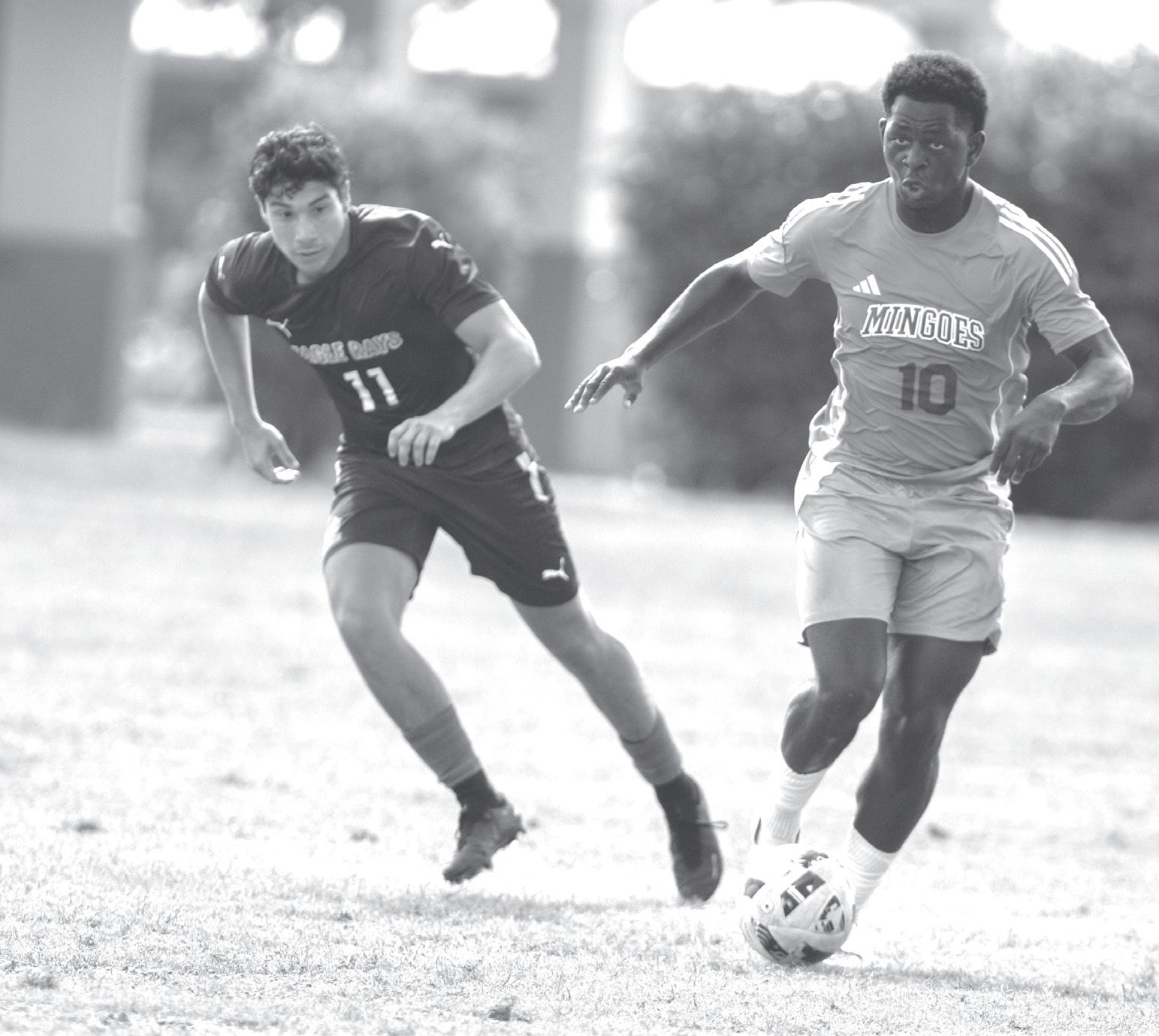
THE University of The Bahamas men’s soccer team took ten shots, but none got in the back of the net as they drew 0-0 against United International College (UIC) Eagle Rays this past Saturday at the Amelia Soccer Parks in Hialeah, Florida.
Left back Clerdjivensky Clerjuste had three of those shots with one going on target. UB dictated most of the match as they had ten shots compared to UIC’s two shots.
UB’s head coach Alex Thompson felt his side
should have won the game.
“In terms of chances created and on-goal, they had two shots,” Thompson said. “Fatigue played less of a factor because we were able to rotate the squad, but we were good and composed enough in the final third.”
Their best chance came late in the second half on a free-kick when defender Joshua Johnson headed the ball that bounced off the woodwork and appeared to go in the goal, but the referee waved it off and play resumed.
UB won 2-1 in the first clash between these two teams on Thursday. Johnson who wore the captain’s band for that game scored both goals on a header from set-pieces. One came from a corner-kick in the first half, and the other came from a free-kick in the second half. After four international games, UB sport a 1-1-2 win/loss/draw record. They head back to South Florida to take on Millennia Atlantic University on Thursday, October 16 and Albizu Uni Saturday, October 18.

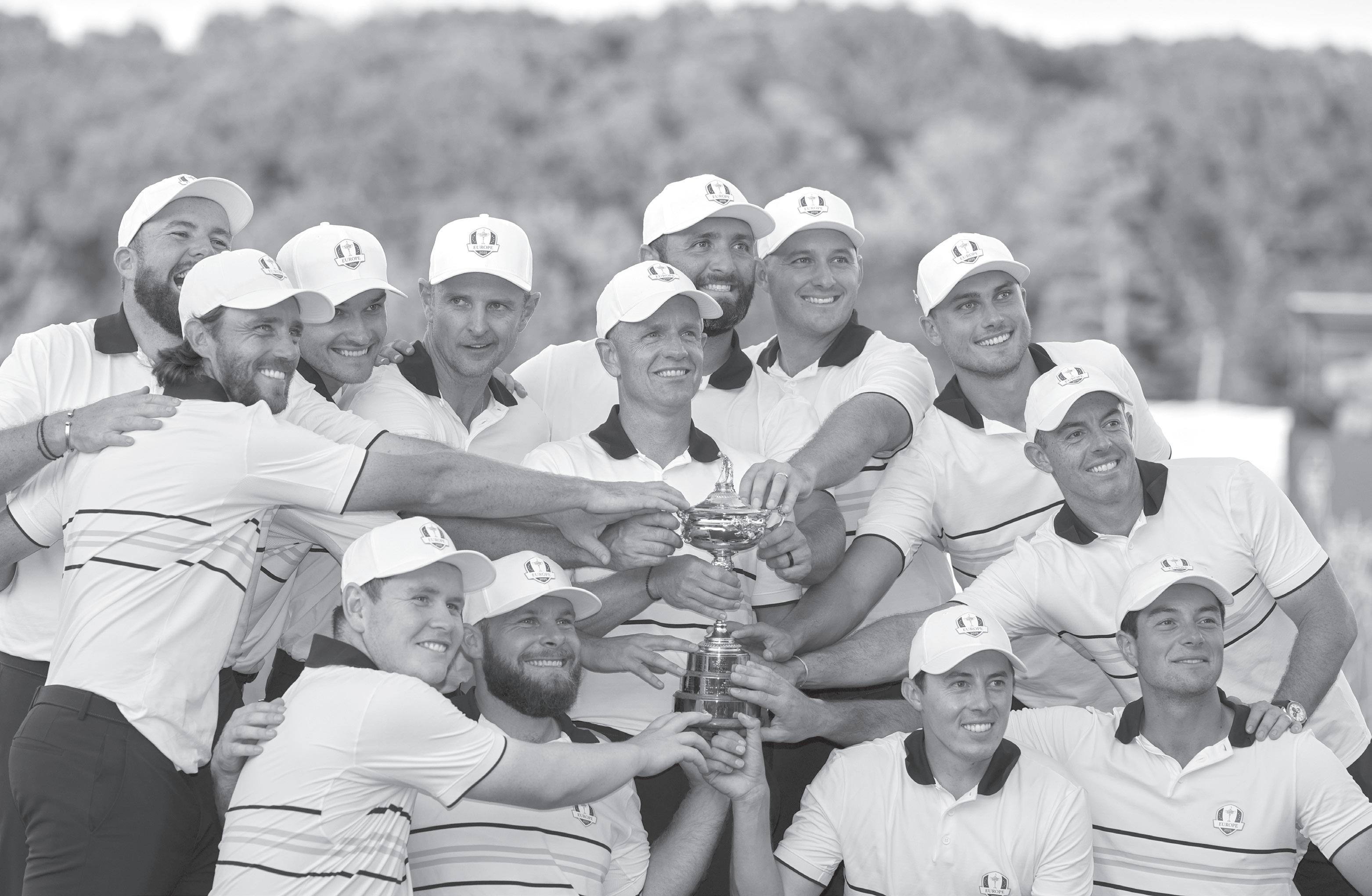
By DOUG FERGUSON AP Golf Writer
THE best news out of the American camp since losing the Ryder Cup again to the Europeans is that no one has suggested another task force.
The path forward is no less muddled than it was leaving Scotland in 2014.
An Indiana club pro — Ted Bishop, the PGA of America president — decided that Tom Watson should be the US captain for those matches at Gleneagles. That didn’t go well, ending not only with another loss but with Phil Mickelson in a most awkward takedown of the captain.
That led to the vaunted task force, and Mickelson was far more optimistic five months later when the work was completed.
“We are looking forward to not just 2016 ... but really laying a foundation and a blueprint for the years to follow of continuity and success,” Mickelson said.
The Americans have won two of the five Ryder Cups since then — that could be called success considering they had won only two of the previous 10 times.
That belongs to Europe, which not only has the Ryder Cup, it practically owns it.
The task force — the official name was the PGA of America Ryder Cup Task Force — was disbanded in 2015 and replaced by a Ryder Cup committee of three PGA Tour players and three PGA of America executives.
The way the system works is for the immediate past captain to replace his predecessor on the committee — Keegan Bradley is on, Zach Johnson is off.
But there is some sentiment in bringing Bradley back as captain for Adare Manor in Ireland in 2027 (perhaps because he won’t be in charge of setting up the course). If that happens, then what? Justin Thomas is on the committee. Jordan Spieth’s term is up.
Of course, the PGA of America could decide to scrap it and start over.
The one constant in the dysfunctional American camp is the PGA of America, which owns the biennial competition of high stakes and even higher revenue when it’s played in the United States.
But the organisation of 31,000 club professionals — as vital as any organisation to the game in America
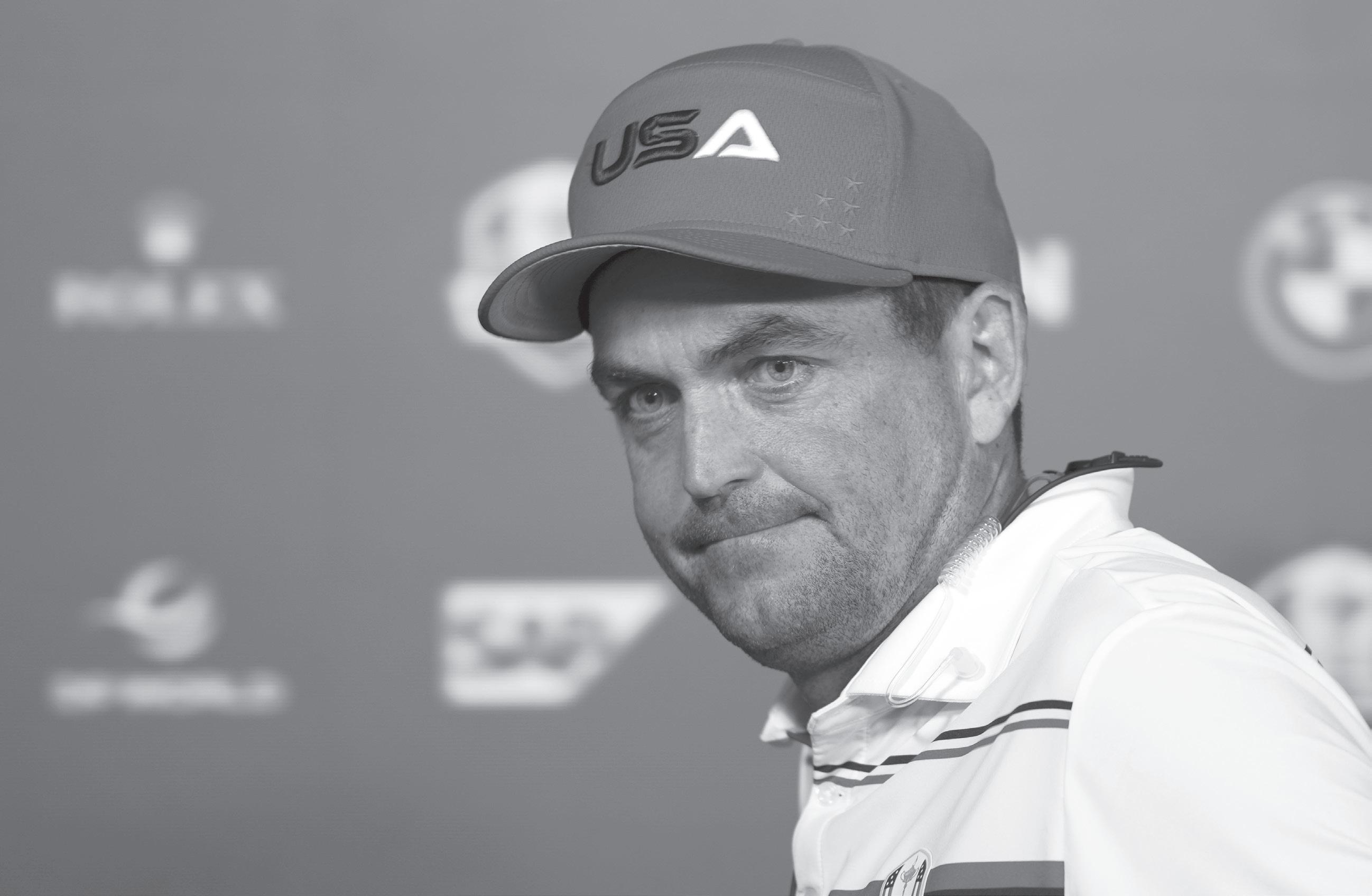

— has no direct involvement with players except for the PGA Championship. Don Rea Jr, the president serving a two-year term, suggested otherwise at Quail Hollow in May. “Don’t forget, every PGA Tour member is a member of the PGA of America, so I’m their president, too,” he said in a rambling news conference.
This is the same president who embarrassingly compared vitriolic comments at Bethpage Black to what could be heard at a youth
soccer game. That came in a BBC interview before the Sunday singles, a day after extra security was brought in to handle vulgarity directed at Rory McIlroy. For the Europeans, this Ryder Cup was business as usual. For the Americans, it’s a mess. One person who helped the American cause more than any other was Paul Azinger. He agreed to be captain in 2008 provided the PGA of America scrap its archaic system of
awarding Ryder Cup points only for top-10 finishes.
Perhaps if the PGA of America was more in tune with the PGA Tour it would have realised sooner that the influx of the best players from every corner of the globe meant it was increasingly more difficult for Americans to earn points.
Oddly enough, the PGA of America has not involved Azinger in Ryder Cup matters since that 2008 victory.
But these issues go further back than the
illustrious task force. This takes root in 1968 when the touring pros lost faith in the PGA professionals who were running the sport, a split that led to the modern PGA Tour.
There were two golf tournaments that needed to be divvied up. One was the old World Series of Golf, which was becoming a lucrative event at Firestone. The other was an exhibition called the Ryder Cup — that’s what it was at the time — that could barely sell a ticket.
The previous Ryder Cup had been at Champions Golf Club in Houston. Peter Alliss, the late incomparable British commentator who played in those 1967 matches, once recalled, “The opening ceremony began with hundreds, not thousands of spectators.”
Tour players took the World Series of Golf, which eventually became a World Golf Championship and now no longer exists. Imagine if they had taken the Ryder Cup. For one thing, the PGA Tour probably would not have bothered creating its own cash cow called the Presidents Cup. There also would not be a disconnect between PGA Tour players and an organisation with which they are not involved
but once a year.
The European Tour owns 60% of Ryder Cup Europe. The tournament committee is part of a wide-ranging selection process led by the European tour’s chief executive, Guy Kinnings, and takes input from an extensive set of people directly involved in the Ryder Cup.
The PGA Tour owns zero percent of the Ryder Cup. It just supplies the players. That’s why money (where the revenue was going) became an issue in 1999 and still lingers. There have been Ryder Cup wins, at Hazeltine and Whistling Straits, but no real template for success.
Mickelson thought the task force would create a blueprint not just for the next one, but for the next 10 Ryder Cups. That didn’t go as planned. It led to a buddy system, and then continuity fell apart when Mickelson led a breakaway to LIV Golf.
Perhaps the next move is for the PGA of America to consider turning over management to the PGA Tour, which has more stability, more expertise running big events and a stronger relationship with the players who perform. It might not be enough to turn the tide. But it can’t hurt.
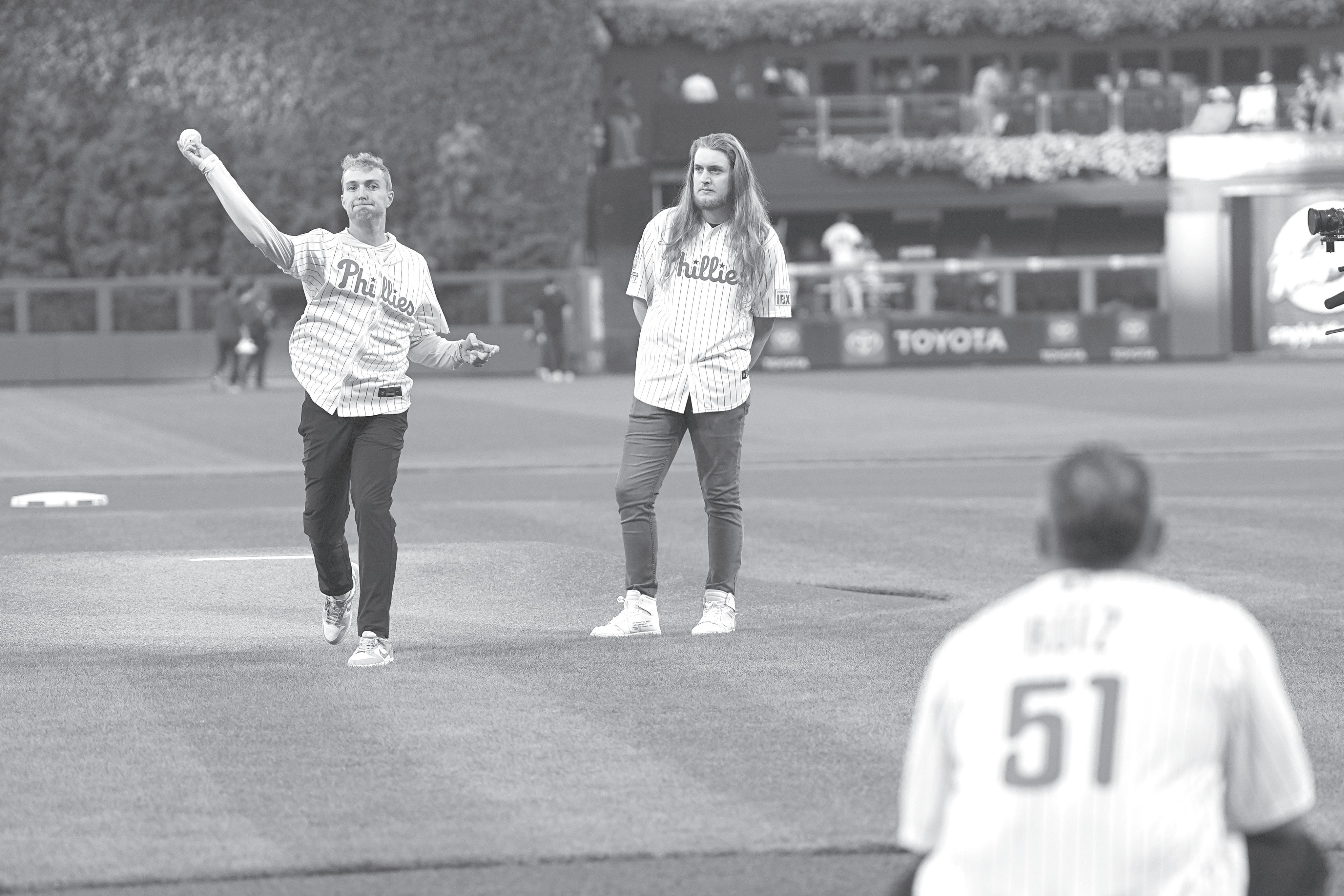
By DAN GELSTON
AP Sports Writer
BRADEN Halladay stood on the field to throw a first pitch at the same ballpark where Roy Halladay threw a playoff no-hitter and wondered how the moment never seemed too big for his father.
Roy Halladay already had thrown a perfect game for the Phillies in 2010, about as rare a feat a pitcher can accomplish in baseball. Halladay pitched himself into baseball history later that October with a playoff no-hitter, the second ever in baseball and a moment that forever stamped an already great pitcher as a bona fide Hall of Famer.
“Tough to be in front of that many people,” Braden Halladay said. “Makes me really think about how incredible it is that my dad not only did it in the regular season but in the postseason. How well he did it, it’s really special to think about for me.” Braden Halladay and his brother, Ryan, both had troves of special memories to share about their father eight years after he died in a plane crash at the age of 40. The Halladay brothers were greeted with a roaring ovation moments after a video tribute aired on the 15-year anniversary of the Phillies ace’s Oct. 6, 2010, no-hitter against Cincinnati.
There was Halladay again, wrapped in a big bear hug with catcher Carlos Ruiz after the final out. Affectionately known as “Chooch,” Ruiz returned on Monday night to catch the first pitch before the Phillies lost to the Dodgers.
“Those moments are in your mind, in your heart,” Ruiz said through an interpreter. “It was an honour to be a part of such a great
moment. Being here today and being able to catch for his son is a great honour.”
Braden Halladay hoped to stick around the big leagues, though not quite as the dominant ace of his era like dad. He pitched at Penn State and earned a master’s degree before he decided to pursue his dream of a frontoffice job — a career path hatched from growing up around the Phillies’ brain trust inside Citizens Bank Park.
“I always wanted to be a Major League Baseball player. That’s every kid’s dream,” Braden said. “But I was super obsessed with the front office and how the front office works. I think anybody who was here and knew me can second that. Even as a 10-year-old, I was just completely enamored by it.”
Braden worked this past spring training with the Phillies’ Single-A team in Clearwater before he landed work as a data apprentice with the Texas Rangers. With the year over, Braden is exploring his options for his next steps in baseball.
“I’m excited to not only follow in my dad’s footsteps but make my own mark on the game, as well, and have my own career,” he said.
Roy Halladay was already a Cy Young Award winner, a 20-game winner and a workhorse who struck out 253 batters in 2003 for the Toronto Blue Jays when he came to Philadelphia. Halladay never really sniffed the playoffs in Toronto and knew he could find that postseason success he craved in Philly when he was traded to the Phillies ahead of the 2010 season. The Phillies had won three straight NL East titles, two pennants and the 2008 World Series when the 6-foot-6 right-hander

arrived poised to win them another title.
Halladay had a first season to remember, going 21-10 with the perfect game on May 29, 2010, in Miami, the no-hitter in Game 1 of the NL Division Series against the Reds and another Cy Young Award. Yes, the no-hitter came in his postseason debut.
The game marked 10-year-old Braden’s first playoff game, too.
“My dad wouldn’t let us go until he was in it,” Braden said. “He clearly wasn’t until then.”
Braden’s highlight from that game was making the jumbotron that night. Ryan Halladay was about to celebrate a birthday and was too young to really understand the gravity of the moment. Plus, he had something more important to worry about than his dad pitching a whale of a game — a birthday trip to the aquarium was on-deck.
“That’s all I could think about,” Ryan said. “I didn’t
care much about anything else at the time.”
The brothers understand and appreciate now all their dad accomplished in baseball. Halladay would spend only four of his 16 seasons in Philadelphia. Halladay never did win that World Series with the Phillies but was 55-29 with a 3.25 ERA with them before he retired after the 2013 season when right shoulder trouble ended his career.
The Phillies retired his No 34 and inducted him into their version of the Hall of Fame.
For one more night in Philadelphia, the brothers got to share in the love from the Phillies fans they showered on their father. Braden noted standing so close to the mound “almost feels like I’m back here with him.”
“It’s always nice to come back and revisit everything,” he said, “I think that any time I get to be around it, it helps me stay really close to my dad.”

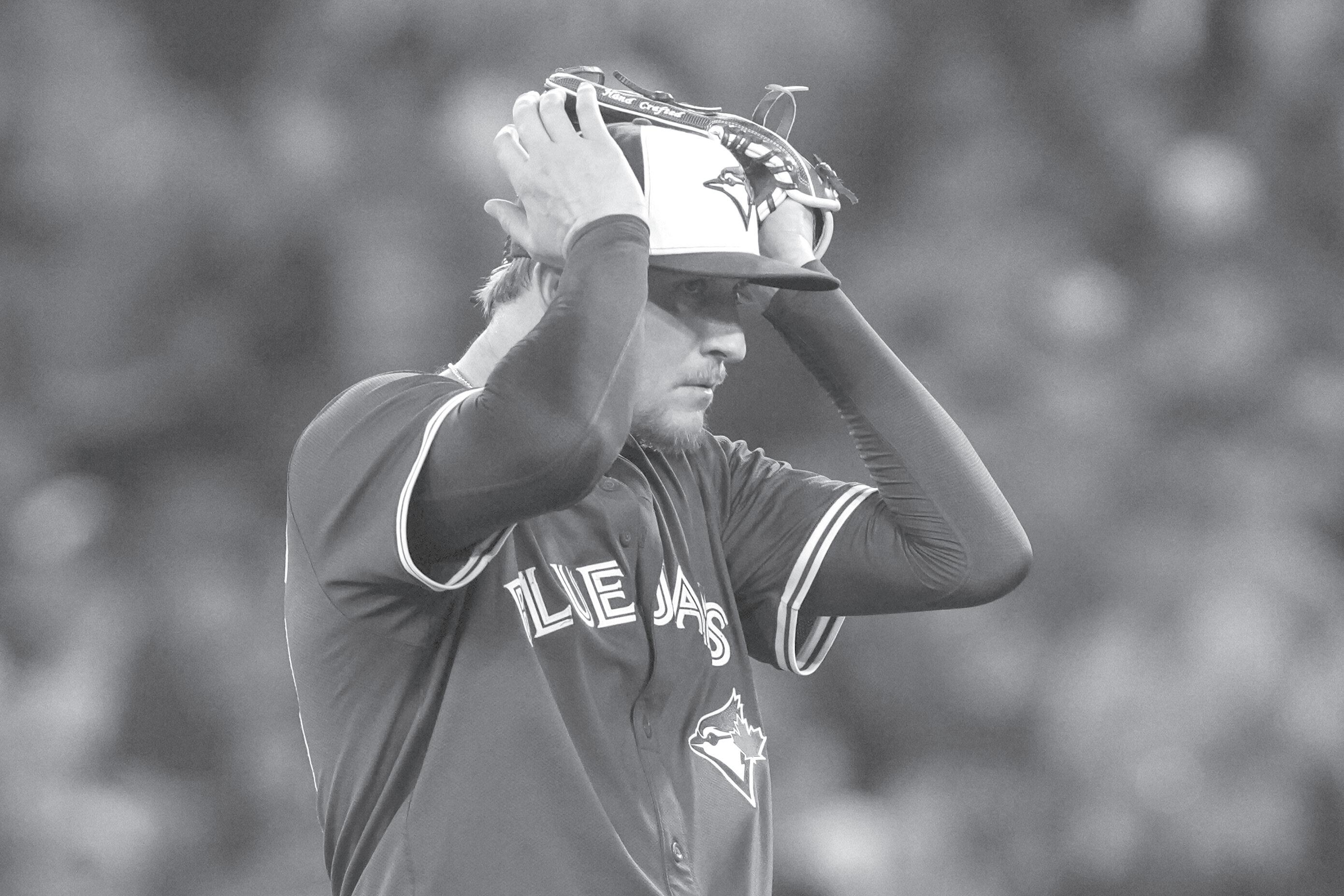
By RONALD BLUM AP Baseball Writer
WANTING to cap Toronto’s season with a title, Jeff Hoffman suggested changing hats.
Six losses in seven games had dropped the Blue Jays into a tie with the New York Yankees for the AL East lead. That prompted the 32-yearold reliever to send Scott Blinn, Toronto’s director of major league clubhouse operations, scrambling to find those retro caps with white panels in the style the Blue Jays wore when they won the 1992 World Series.
Toronto is 5-0 in the historical headgear over the past two weeks as it takes a 2-0 lead into Tuesday night’s Game 3 of the bestof-five AL Division Series against the Yankees.
“I didn’t pack another hat,” manager John Schneider said with a smile on Monday.
Following a 7-1 loss to the Red Sox at Rogers Centre on Sept. 24, Hoffman suggested to Binn a switch to the 1992 headgear, which was used during Major League Baseball’s Hall of Fame weekend promotion from July 25-27 — not because he’s superstitious, but because he liked the look. Wearing the white panels, the Blue Jays had taken two of three at Detroit to finish a fourgame series.
“`We need a new combo. What should we wear?’” Hoffman said, recounting the player discussion.
“And I said, `I know what we should wear. We should wear the blues, the blue jerseys with the white-panel hat.’ And they all kind of like perked up because they didn’t know I knew about them.”
Blinn found the caps in a Rogers Centre storage room. Toronto beat Boston 6-1 on Sept. 25, wearing blue alternate jerseys and the white-panel chapeaus. The next night, a Friday, the Blue Jays were required to wear Nike Connect uniforms topped by pitch-blue caps, suggested by Lake Ontario at night. They beat Tampa Bay 4-2 to remain tied with the Yankees.
On most days, players get to decide which uniforms to wear. Given that option for the final weekend of the regular season, the Jays stuck with the blue jerseys and white-panel hats. They closed with 5-1 and 13-4 wins over the Rays to win the division on a tiebreaker over New York.
Toronto finished the season 58-45 in blue caps, 20-17 in the two-tone hats with powder blue visors and navy crowns that were launched with the return of powder blue alternate jerseys in 2020, 8-3 in Nike Connect games and 5-1 in the white-panel throwbacks. They were also 1-2 in Armed Forces

caps with beige camouflage crowns and olive visors from May 16-18, 1-0 in red for Canada Day on July 1 and 1-0 in light blue crowns and red visors for July 4.
The Blue Jays stayed with the white-panel caps and blue jerseys in the first two games of the Division Series, romping over the Yankees 10-1 and 13-7.
“I just wear what’s in my locker. I just will wear what we’re told to wear,” fourtime All-Star outfielder George Springer said, spurning superstitions.
Toronto wore caps with white panels for all games from its inception in 1977 through 1990 — with white jerseys at home — then switched to all blue caps for road games in 1991. The Blue Jays dropped the white panel at home on July 6, 1991, in the midst of a five-game losing streak, going with all blue, and beat the visiting Chicago White Sox 5-1 behind six shutout innings from Dave Stewart.
“I’m not sure what the blue caps were all about,” Stewart said after the game, his 150th career victory. “But we won, so maybe we’ll wear them again.”
Blue Jays equipment manager Jeff Ross thought of the change “just to see how it looks with the white uniform”.
“It had nothing to do with the losing streak,” Ross said at the time.
“We’d been doing so well at home so I didn’t want to do it while we were going well. This was the time to do it. It looks great after a win.”
Toronto went on to win its second straight World Series title in 1993, and the all-blue caps remained for most games. The Blue Jays brought back the white panels on Aug. 16, 2015, for a “Turn Back the Dial” promotion honoring the 30th anniversary of the team’s first AL East title, and beat the Yankees 3-1. Toronto then used the white panels at least once per season and as many as 27 times in 2018 and 24 the following year, according to uniformlineup. com, but then decreased its frequency.
The team hadn’t worn them since Aug. 27, 2022, before they returned this year for MLB’s Hall of Fame weekend promotion.
“We’ve been playing well since we’ve been wearing them, which is hard for my argument of, hey, it doesn’t matter what hat we’re wearing guys, like, we just need to play good,” Hoffman said.
And even Springer’s disdain for superstition only goes so far. For instance, he won’t think of stepping on a foul line.
“That,” he said, “would be crazy.”


By JOSH DUBOW AP
Pro Football Writer
THE 50-plus-yard field goals that once were a rarity in the NFL are now as routine as far shorter kicks a generation ago. The range for many kickers now exceeds 60 yards, changing late-game strategy in a major way.
The kicking revolution has sparked questions about whether the balls are juiced.
Not quite, but there is a major difference this year, with teams now having the chance to prepare kicking balls before game day and practice with the same balls they use in games. The added length that that gives kickers had Philadelphia defensive coordinator Vic Fangio comparing it to the home run explosion during baseball’s steroid era starting in the late 1990s.
“It’s almost like they need an asterisk here,” Fangio said. “It was the live ball era or the asterisk for those home runs (Barry) Bonds and (Sammy) Sosa and (Mark) McGwire were hitting. The way they’ve changed the ball, the NFL, the kicking ball has drastically changed the field goals.”
Fangio’s comparison might be a bit hyperbolic, with kickers saying the more broken-in balls travel only a few yards farther, but even that could put records for long-distance field goals in jeopardy.
There already have been four kicks made from at least 60 yards this season — one shy of the single-season record — with Tampa Bay’s Chase McLaughlin hitting a 65-yarder against Fangio’s Eagles in Week 4, just 1 yard shy of Justin Tucker’s record set in 2021.
Dallas’ Brandon Aubrey made a 64-yarder in Week 2, and Pittsburgh’s Chris
Boswell and Minnesota’s Will Reichard also made kicks of at least 60 yards. Fangio predicted Aubrey will eclipse the 70-yard barrier this year.
Aubrey said he believes the biggest change is the more consistent balls providing more peace of mind.
“The nice part about the rule is now you get to the point where you don’t have to think about the balls,” he said. “You don’t have to be, ‘Is this ball going to be in good shape or not?’ Now it’s, ‘OK, the balls are going to be what they’re supposed to be.’”
Long-distance kicks have become far more prevalent as the quality of kickers has improved thanks to more training and specialized coaching. The NFL has set records in each of the last four seasons for made field goals of at least 50 yards, with the total reaching 195 in 2024 — doubling the total from every NFL season until 2015.
Kickers are making 72.5 percent of field goals from at least 50 yards — nearly double the rate from three decades ago.
“I think it’s definitely an advantage for specialists this year,” said 49ers long snapper Jon Weeks, who is entering his 16th season in the NFL. “You’re starting to see the field-goal distance line back up a little bit. That’s just kind of natural. It’ll be exciting to see what some of these big-legged kickers can do.”
While the trend toward longer kicks has been a steady one the past two decades, it has increased even more so far this season following the change in rules for the “K ball,” with the 28 made kicks from at least 55

yards the most ever through five weeks and more than in any entire season until 2022.
The change this year came after seven teams — Baltimore, Cleveland, Houston, Philadelphia, Las Vegas, Minnesota and Washington — made a proposal to reduce the stress on equipment staffs on game days. Before this season, balls designated for use in the kicking game were shipped directly to the officials and brought to the stadium on game day. Teams then had a 60-minute window to prepare three kicking balls, using only a wet towel, a dry towel and a special ball brush.
Now, teams were given 60 “K balls” before the season to prepare for games, with each team getting three each game that are approved by the referee. No ball can be used in more than three games. The initial rules for kicking balls were first put in place in 1999 after specialists were allegedly doing all sorts of things to manipulate the ball, including using microwave ovens, dryers
and saunas to soften the leather and make them easier to kick.
Initially, only the officials were allowed to prepare the balls, and kickers and punters complained they were too slick. That changed following the 2006 season, with teams getting a short window on game day to prepare the balls, after Dallas quarterback Tony Romo dropped a snap as the holder on a potential game-winning field goal in a playoff loss to Seattle.
Now the balls for the kicking game can be prepared in advance — just like the balls for the rest of the game — but teams are mostly limited to using the towels and a special Wilsonbranded brush. Balls can’t be subjected to high heat like dryers or microwaves and the shape can’t be altered at all.
Titans special teams coach John Fassel downplays the impact of the new rules, saying the approximately 20 minutes the equipment staff previously had to prepare each of the three kicking balls was sufficient.
Jets kicker Nick Folk
equated the difference in the balls to buying a new baseball glove each week and breaking it in for an hour, compared with having a glove that has been broken in over a long period of time and now fits just perfectly.
“I’m happy it happened,” Folk said. “We get to kind of do just like quarterbacks get whatever they want to do to the ball, as long as it looks like a football and the logo’s still there and all that stuff, I think they’re pretty lenient with that. It’s a very welcoming thing to be able to kind of look at a ball and be like: ‘All right, I want to kick this one this week, I want to kick this one this week.’”
The impact isn’t solely on field goals. Punts are traveling farther, too. After the average dropped by 1.5 yards from 1998 to 1999 when the first “K balls” were put in use, there has been a gradual uptick since the rules first changed in 2007.
The average punt now travels 47.7 yards, which would have been the individual single-season record as recently as 20 years ago. San Francisco punter Thomas Morstead said he lets the equipment staff deal with the ball preparation
but does see a difference, especially compared with when he first entered the league in 2009 and some home teams would try to sneak fresh balls in for the visitors.
“I’m not like a scientist back there measuring things out,” he said. “I just give them general things like, hey, if the leather is nice and soft and the ball’s relatively beat in, and we want to keep the PSI as high as possible, which is 13.5, then I’m good.”
Niners kicker Eddy Pineiro estimates the broken-in balls add maybe 3 or 4 yards to the distance on kicks, calling the difference meaningful but not as impactful as kicking at a high altitude in Denver.
“It’s normal now to kick a 60-plus-yard field goal,” said Pineiro, who hit a career-best 59-yarder this past week but once kicked an 81-yarder in practice in college at Florida.
“It’s not like: ‘Oh my God. Wow!’ like it used to be. It’s kind of expected. But that’s part of the game. The game’s evolving for the better, and kickers are making more kicks in and farther kicks. If you don’t have a broken-in ball, it’s a lot harder to
a

By ROB MAADDI AP Pro Football Writer
THE Jaguars, Broncos and Patriots had statement victories in Week 5. How they follow up will determine if they’re ready to be real contenders.
Trevor Lawrence led Jacksonville to an incredible 31-28 comeback victory over Patrick Mahomes and the Kansas City Chiefs on Monday night, overcoming a few of his own miscues and saving his best for the last drive.
The Jaguars are off to a 4-1 start under coach Liam Coen, and they proved in front of a national audience that they can compete with any team.
Now comes a difficult matchup at home against Seattle. The Seahawks (3-2) lost to Tampa Bay on the final play in a game they could’ve won if not for a late interception.
It’s a quick turnaround and short week for the Jaguars after an impressive win. Some teams can let down in these situations.
Jacksonville can’t afford to let up, especially with a trip to London to face the Rams coming up the following week.
Denver (3-2) went to Philadelphia on a short week of preparation after a lopsided win over the Bengals and stunned the reigning Super Bowl champion Eagles. Down 17-3 in the fourth quarter, Bo Nix led the Broncos to a 21-17 comeback win and the defence stifled Saquon Barkley, Jalen Hurts and the rest of Philadelphia’s inconsistent offence.
Now, they’re heading to London to face the NFL’s only winless team, the New York Jets.
It’s another challenging travel week for the Broncos, who are tied with the Los Angeles Chargers in the AFC West. Sean Payton’s team can’t slip up against the woeful Jets, who have talent despite their 0-5 record.
Denver returns home to play four of its next five games at home before a bye in Week 12. The Broncos host the Giants and Cowboys, visit the Texans, and then host the Raiders and the Chiefs. They could be 8-2 going into a matchup against Kansas City if they take care of business and don’t overlook any opponent. That starts with beating the Jets.
New England (3-2) went to Buffalo and shocked the Bills on Sunday night with Drake Maye leading a 23-20 victory. The Patriots made it clear that Josh Allen and the Bills aren’t going to cruise to another AFC East title. They won’t be pushed around anymore, not with coach Mike Vrabel standing on the sideline.
Maye has been impressive in his second season and certainly looks like the
franchise quarterback the Patriots have sought since Tom Brady left. But that win over the Bills can’t be New England’s Super Bowl. The Patriots have a favourable schedule the rest of the way. Only two of their remaining games are against teams that currently have a winning record — Buccaneers in Week 10 and Bills in Week 15.
The Patriots head to New Orleans (1-4) this week and Tennessee (1-4) next before returning home to face Cleveland (1-4). If they want to challenge Buffalo for the division, they must defeat inferior teams.
Baker Mayfield is on his third offensive coordinator in three seasons with Tampa Bay and fifth in four years, including his stints with the Panthers and Rams in 2022.
He has improved each season and is playing at an MVP level. Dave Canales spent one year as the Buccaneers OC in 2023 and landed a head coaching job in Carolina. Coen replaced him, Mayfield had his best season and the Jaguars hired him to be head coach.
Josh Grizzard took over for Coen, Mayfield has elevated his game another notch and Tampa Bay’s offense is averaging 27 points per game.
In Philadelphia, Hurts has had five offensive coordinator in six seasons.
He thrived under Shane Steichen (2021-22), was runner-up for NFL MVP in 2022 and led the Eagles to the Super Bowl that season.
But he regressed in 2023 under Brian Johnson. Hurts was Super Bowl MVP last season with Kellen Moore as the OC. But Moore left to coach New Orleans, Kevin Patullo replaced him and Philadelphia’s offense has struggled this season despite a 4-1 record.
Several current and former NFL players are teaming up with Abbott and the Big Ten Conference to support the We Give Blood Drive, a conferencewide competition involving all 18 schools to raise the most blood donations.
Drew Brees, Kirk Cousins, Matt Leinart, Prince Amukamara, Pat Freiermuth and Kayvon Thibodeaux are among those, along with Philadelphia Phillies slugger Kyle Schwarber, who are encouraging fans to donate blood to save lives and tackle critical blood shortages across the US.
The winning school will receive a $1m donation from Abbott to advance student or community health. This year’s competition continues through December 5.

